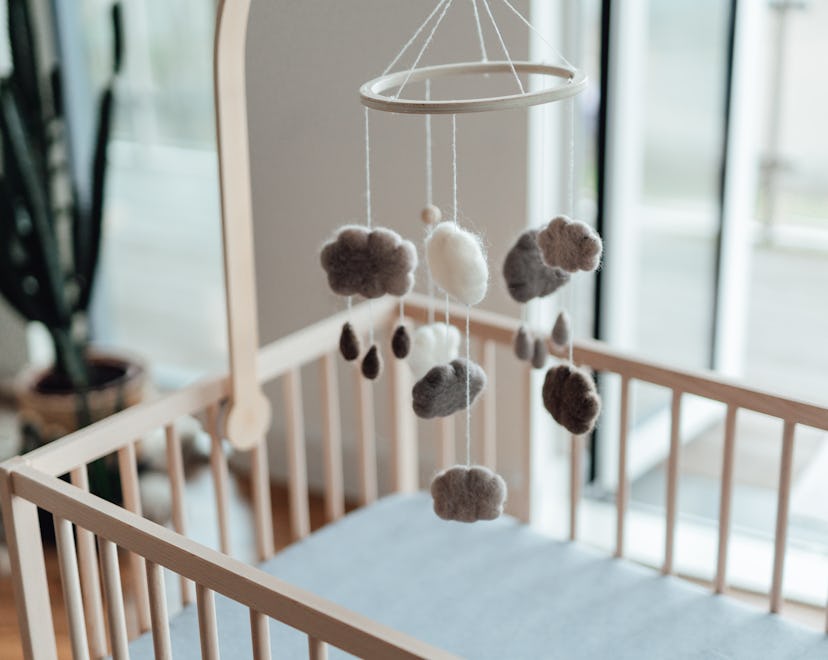little by little

New Study Adds Another Piece To The SIDS Puzzle
“Our ultimate goal is to identify and to prevent SIDS.”
A study published in The Journal of Neuropathology & Experimental Neurology last week found yet another piece of the heart-wrenching puzzle that is Sudden Infant Death Syndrome (SIDS). While it’s a relatively small study, the findings point — as others have — to the hopeful possibility that researchers may eventually be able to pinpoint a biological marker for SIDS that would enable them to identify babies most at risk.
What the study found
For years now, researchers at Boston Children’s Hospital have been looking for specific biological vulnerabilities that may put infants at risk for SIDS. “We’ve been very focused on the lower brainstem,” Dr. Robin Haynes, Principal Associate in Pathology at Boston Children's Hospital and one of the authors of this study, explains. She and her colleagues have been particularly interested in the part of the brain that regulates autonomic functions, the essential things, like heart rate, breathing, and digestion, that your brain regulates without you have to consciously tell it to. “The function of serotonin in the brainstem is important because it mediates those autonomic functions, and it mediates what we think of as protective responses,” Haynes says.
By protective responses, she means that the brain also should notice when one of these functions — like breathing — is impaired. What should happen when an infant is not getting enough oxygen — perhaps they are asleep with their face covered by a blanket or pillow, causing them to rebreathe their own air rather than fresh oxygen — is that they should be woken up by a protective neurological response called autoresuscitation. “They'll take a big gasp of air, and that helps restart the breathing process and is, therefore, protective. Serotonin plays a big role in that, and particularly this receptor that we looked at is really important for that,” she says.
What Haynes and her fellow researchers found in the 58 victims of SIDS that were included in the study was an abnormality in the 5-HT2A receptor, the seratonin receptor that’s associated with this essential and protective autoresuscitation response. The findings indicate “the existence of an integrative brainstem network that fails to facilitate arousal and/or autoresuscitation in SIDS cases.”
Why SIDS is hard to study
SIDS is not just not one disease, Haynes says. Researchers believe that SIDS does not have a single cause; rather, they are searching for multiple biomarkers for the condition. “I think of disease as a puzzle, and research puts pieces in the puzzle,” she says. “But SIDS is heterogeneous. so you don't have one puzzle, you have multiple puzzles. Every piece of information you get helps move forward another piece of at least one of those puzzles.”
Finding one abnormality in a single seratonin receptor may seem small, and certainly there is a lot more to learn in terms of how these abnormalities are related to the ultimate cause of SIDS. But it’s an essential piece of a huge, complicated puzzle that is slowly being put together by dedicated researchers like Haynes and her co-authors. “Our ultimate goal is to identify and to prevent SIDS. What does that prevention look like? I don't think we know that yet, other than adhering to safe sleep,” Haynes says.
Looking to the immediate future, Haynes says that she and her colleagues plan to revisit this particular receptor, and to replicate this study on a larger scale. She also hopes to connect it to existing research to begin to paint a broader picture of a complex questions. “Can we put the serotonin story in context with all the other pathological findings that people have reported on? How are they related? What’s upstream of the serotonergic abnormality, and what's causing those abnormalities? And ultimately, we want to ask: Can we identify these abnormalities in a living infant so then we can say that that infant is at risk for SIDS?”
What parents should know about SIDS
SIDS is a specter that looms over new parents, and though this study and others like it point to a day when SIDS may be identifiable and therefore preventable, doctors are not yet able to identify babies at risk.
While neurological abnormalities like the one identified in this study are beyond your control, Haynes reminds parents that managing environmental risk factors is a proven way to reduce your child’s SIDS risk. “You may feel like you have no control over these abnormalities, but there is something that is in your control and that is how you handle their environment,” Haynes explains. She reminds parents that adhering to the CDC’s safe sleep guidelines for infants does have proven power against SIDS, even though it can be challenging to abide by them, it is crucial and protective to always:
- Put baby to sleep on their back and never in the prone position.
- Use a firm and flat sleep surface, covered only with a tightly-fitting sheet
- Room share (but do not bed-share)
- If your baby is under a year old, be sure their crib is empty of bedding, blankets, stuffed animals, bumpers or pillows
- Be sure that the baby’s room isn’t too warm
Though Haynes notes that SIDS can happen even in safe sleep environments, it is very, very rare. These environmental factors are controllable and proven to be protective against SIDS.
This article was originally published on